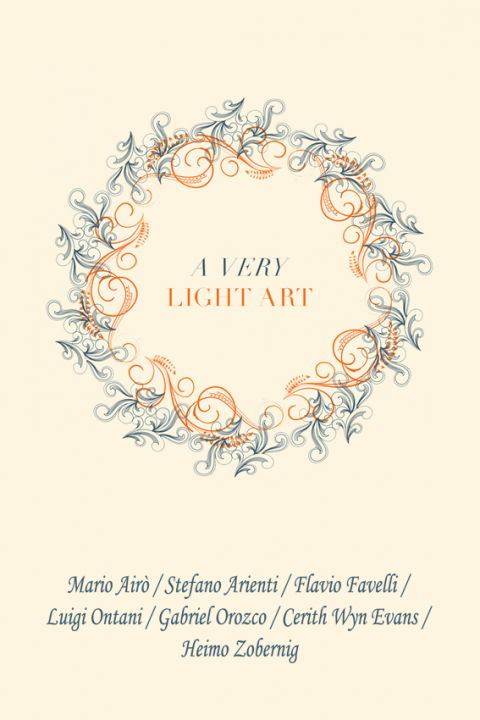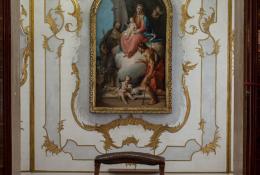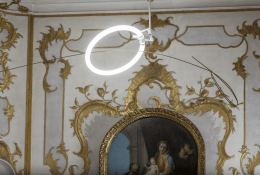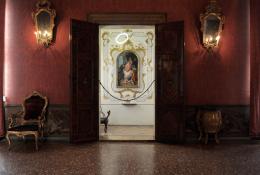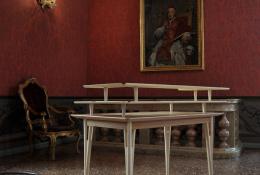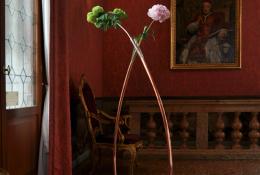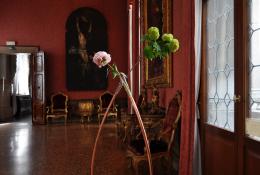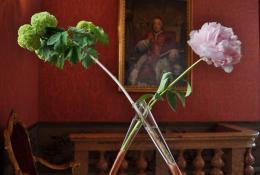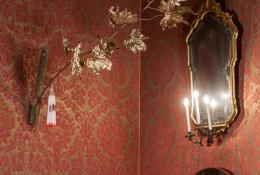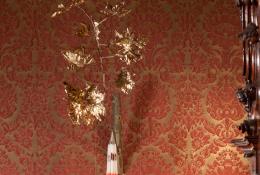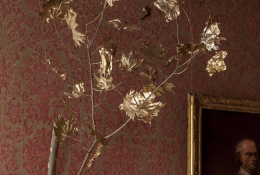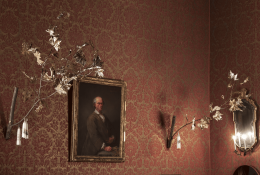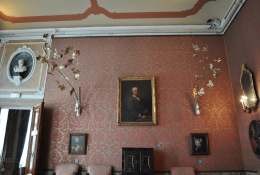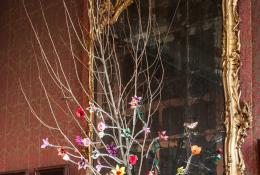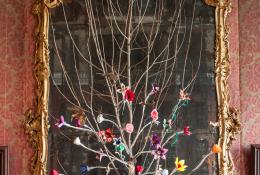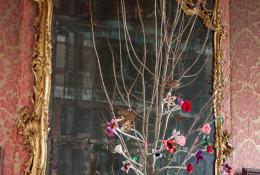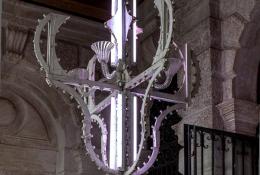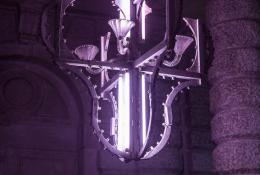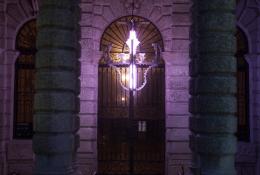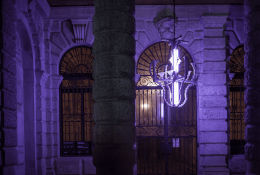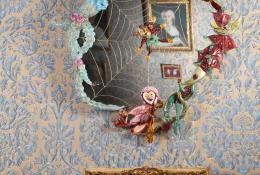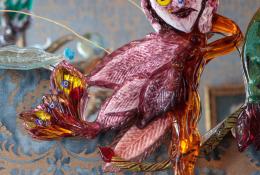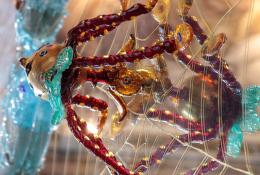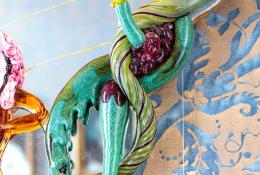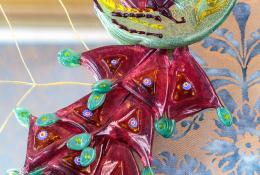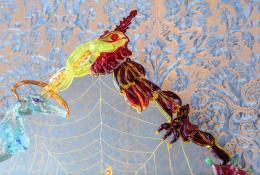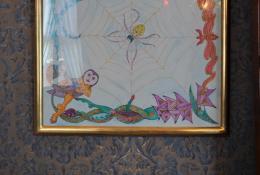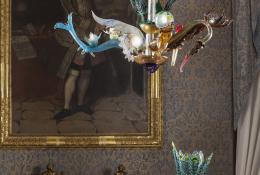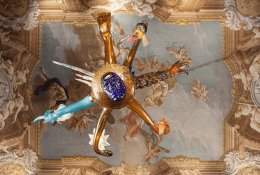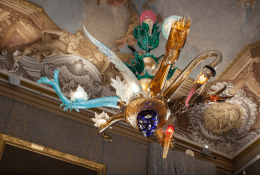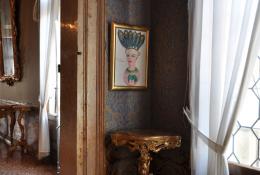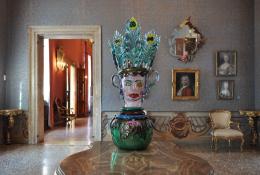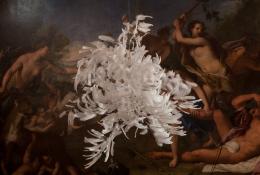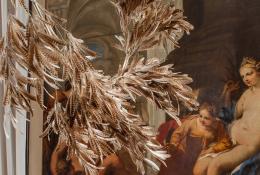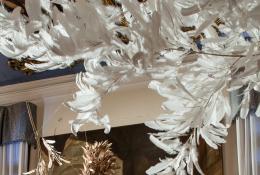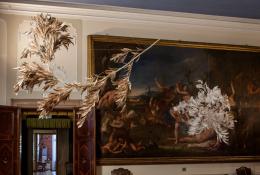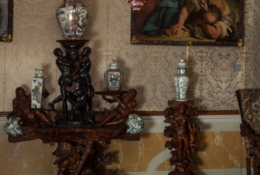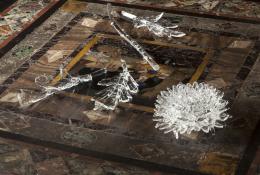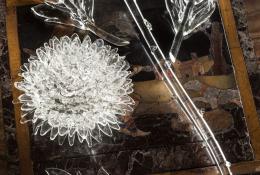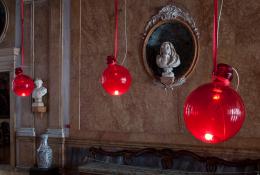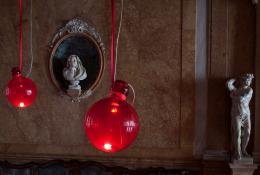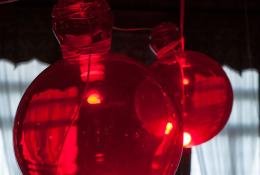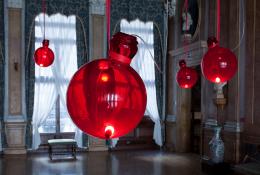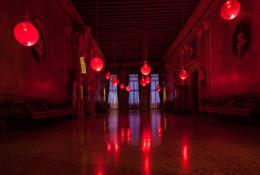A Very Light Art
Promoted by the Fondazione Musei Civici di Venezia with the collaboration of Università IUAV di Venezia, Dipartimento di Culture del Progetto, the project was launched by Caterina Tognon as an outgrowth of her longterm focus on artists when they use glass as a media, and in particular for this show, on the design of the chandelier.
The exhibition curated by Cornelia Lauf, with the scientific direction of Gabriella Belli, features seven notable contemporary artists: Mario Airò, Stefano Arienti, Flavio Favelli, Luigi Ontani, Gabriel Orozco, Cerith Wyn Evans, Heimo Zobernig. The list of artists features individuals noteworthy for their extraordinary sensitivity to material and context.
SHORT BIO
Mario Airò has proposed a lighting fixture using neon, a desk he has designed for Adele-C, in Milan, and a standing flower vase created with one of the finest coppersmiths in Italy, Luigi Barato. Each object reveals its usefulness, yet can stand alone as a sculpture. Superlative artisanal techniques are also at the core of these apparently simple objects.
Stefano Arienti has proposed a small forest of trees composed of branches, with votive candles hanging from them. These are installed in one of the regal drawing rooms of the Ca' Rezzonico, as lamp fixtures. Recalling Surrealist film, Arte Povera installations, and even the work of some of the Fluxus artists, this configuration of natural plants, spray-painted and festooned with the most common articles, stands in deliberate contrast to the noble palazzo.
Flavio Favelli is known for his magical transformations of mundane household objects, and their recomposition into sculptures of majesty and poetry. Gilded frames carrying velvet curtains, regal mirrors with surfaces washed away, or recomposed chandeliers turned from elements that are kitsch, into objects of beauty and grandeur. A major chandelier named Violet Murano is installed at the Grand Canal entrance of the Museo Ca' Rezzonico.
Luigi Ontani, grand master of the italian art scene, offers his signature inversion of names and myths, in a series of works that seem contrived specifically for the Ca' Rezzonico, but in fact, predate the exhibition. Ontani's principle work is the chandelier Mayadusa, his first such glass lamp, realized in 1988 with the glassblower Maestro Silvano Signoretto. In the same room, will be exhibited Nel Regno del Ragno Eggoista, a large mirror depicting a spider weaving its web, and the vase Vanitaso, both accompanied by preparatory watercolors. The titles of the works are more than redolent of the artist's elegant studies of allegory, purpose, material, and context.
Gabriel Orozco is featured in the selection of two marvelous mobiles, enormous and ultra-light contraptions fabricated from hundreds of feathers. One mobile is in white feathers, the other, a cloud of light brown. These works, exhibited in a Parisian gallery for their first presentation, are now situated in the august chambers they might have been conceived for. A superb update of ancient lighting fixtures. In a New World adaptation of an Old World form, Orozco supplants a refererence to flowers or natural forms (such as would be seen in a glass chandelier), with nature itself. His easy play nonethleless stems from a deep knowledge of sculpture and materials, as well as predecessors from Calder to Mirò.
Cerith Wyn Evans has elected to rewire the famous Ca' Rezzonico chandelier, a marvelous work of art fabricated in the mid XVIII century. The chandelier, structured in the form of a "pagoda" in white glass with polychromy ornamento, was conceived and produced by Giuseppe Briati in Murano. Called also "Rezzonico" chandelier, the "Ciocca Veneziana" was subsequently produced in many variations, exported around the world, and considered the archetypal chandelier of Murano's tradition. Evans has often used readymade lighting fixtures, and here too utilizes a suite of music known for its elegiac qualities, and placing under it one glass chrysanthemum produced especially for the occasion of the exhibition. The chandelier is meant to flicker to the tune of the music. A subtle and poetic "détournement" of history, capturing the melancholy that is unique to Venice.
Heimo Zobernig's work has received international renown in recent years, culminating in his major retrospective in Madrid at the Reina Sofia, in 2012. For A Very Light Art Zobernig agreed to create a specially produced light object, a lamp that does not shed light so much as attract attention for its rare beauty. It is an object that is the largest glass size that can be blown in Murano, and has been produced in ruby red spheres, in a little edition.
A catalogue edited by Veronica Bellei and Camilla Salvaneschi and published by Kaleidoscope, Milan, features a text by Cornelia Lauf and Caterina Tognon. It comprises an extensive photographic survey of the unique installation at Museo Ca’ Rezzonico by Francesco Allegretto, Pamela Breda and Luca Vascon.
The catalogue is sponsored by Carlo Franchetti.
A brochure about the exhibition also features a map highlighting some of the most important or surprising lamps in Venice, as researched by Caterina Tognon, and designed by Valerio Veneruso.
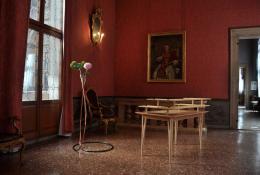
Mario Airò
Victor
2010
Solid maple and light and dark bamboo, with lid, open and hologramme
H 78 x D 95 x 143 cm
Courtesy: Adele-C, Milano
Ph. P. Breda
Untitled
2012
Vase for long-stemmed flowers, copper tube bent and burnished, glass test tubes made to measure
Luigi Barato production, Camisano (Vi)
H 128 x D 20 mm x 78 cm
Courtesy: Golden Ruler, Rome
Ph. P. Breda
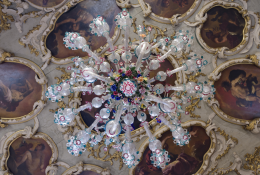
Cerith Wyn Evans
Space here becomes Time
2013
Light installation
Ciocca chandelier by G. Briati, Murano, XVIIIth century
H 200 x 166 x 166 cm
Courtesy: Cà Rezzonico, Venezia
Independent breather unit and flash player
Courtesy: White Cube, London
Caterina Tognon, Venezia
Grateful thanks to Lorcan 'O Neill, Rome
Ph. L. Vascon
